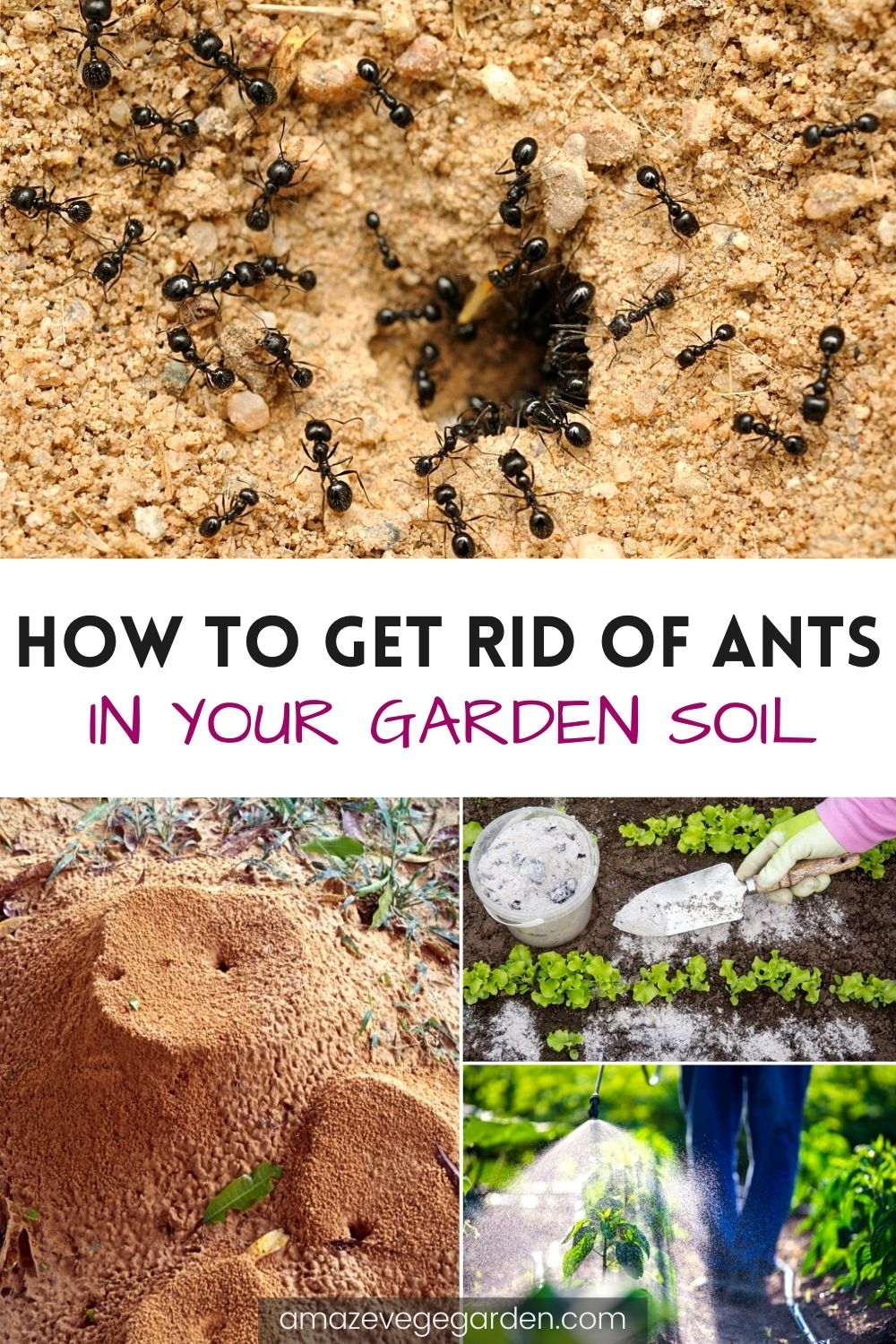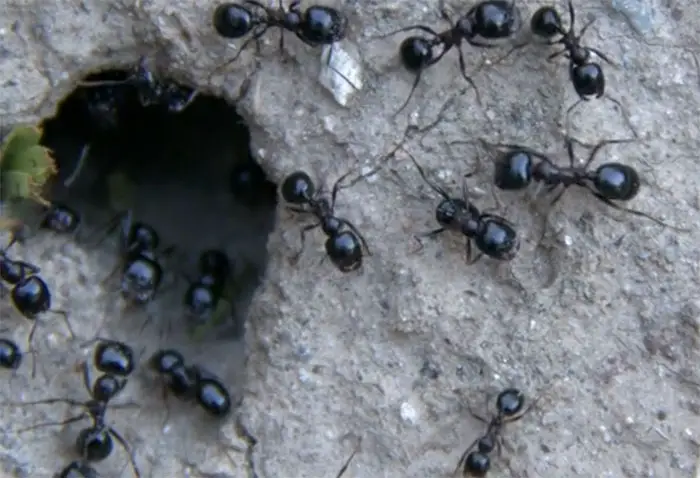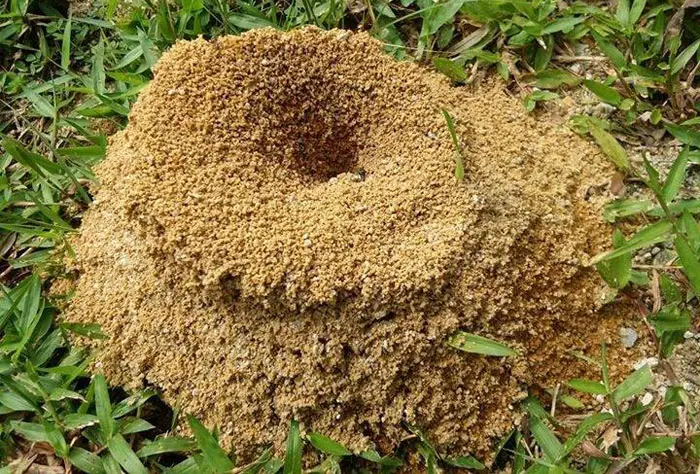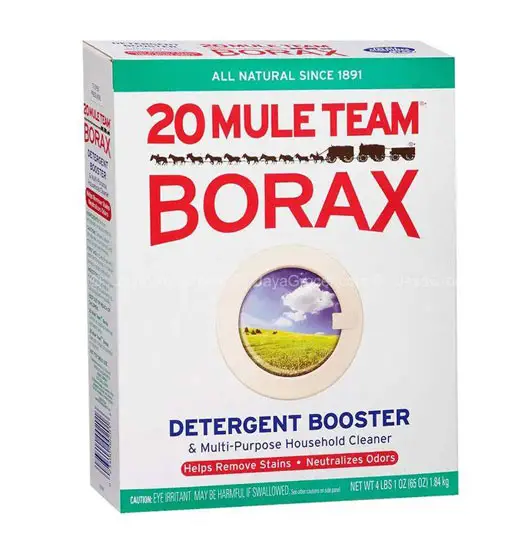One of the most studied insect species, ants, control both their habits and our imaginations. With over 12,000 species of ants inhabiting various parts of the world, the behavior of these industrious creatures ranges from scientific inquiry to ant control.
A common garden pest, ants, can be more than just a nuisance, with species like carpenter ants capable of doing termite-like damage to wood structures. Fire ants are notoriously aggressive though they are not commonly found indoors.
In the summer months, ants are a widespread infestation. They are attracted to your garden because of the shelter from the heat and readily available food from your crops and even other organic matter.
Identifying The Ant Species
There are nearly 1,300 species of ant in the U.S., with some being more common than others. Identifying the type of ant invading your garden soil can help you understand how to get rid of them effectively. Entomologists have identified four main types that invade gardens: pavement ants, carpenter ants, fire ants, and odorous house ants.
Pavement ants are small black or brown six-legged insects found near sidewalks and driveways; they feed on a variety of food sources such as honeydew from aphids and other sweet substances. Carpenter ants nest in wood and cause damage by tunneling through it; their colonies can become quite large if left unchecked.
Fire ants build mounds up to 18 inches tall above ground level; these pests attack anything that touches their mound and bite with a painful sting. Odorous house ants are often seen indoors but may also inhabit outdoor areas such as gardens; these tiny dark-colored creatures produce an unpleasant smell when crushed. Understanding which ant species is present will allow you to tailor your approach for effective control.
Soil Conditions Favoring Ants
Ants are a species that thrive in various types of soil. In particular, ants can colonize soils that have high levels of organic matter and those containing high concentrations of nitrogen-rich material. It is the presence of these substances which provides the nutrients to sustain ant colonies. Furthermore, certain types of soils may also be beneficial to ants due to their ability to retain moisture; this allows for greater access to food sources and water availability throughout the year. The type of soil found in gardens often has an ideal combination of features for sustaining ant populations, making it important to understand what optimal conditions exist for them to thrive.
The most common garden soil consists mainly of clay particles with some organic material mixed in. When wet, clay absorbs large amounts of water without becoming sodden or saturated; at the same time, its structure holds onto air pockets between particles providing good drainage and aeration for root growth and respiration by microbial organisms living within it. This mixture provides excellent accommodation for many different kinds of species including ants who prefer moist but well-drained areas where they can build nests safely underground while still having enough oxygen supply from above ground level.
Adding additional nutrients such as compost or fertilizer will increase the amount available to both plant roots and microbes residing within the soil environment, ultimately benefiting ant colonies through increased food supplies and nesting sites. Ultimately, understanding how to maintain proper soil conditions in your garden or yard will not only help plants flourish but also help regulate ant populations too – ensuring that their numbers remain balanced rather than overwhelming any given area. By doing so you’ll ensure that there is plenty of room for other insects and animals who need suitable habitats too before attempting any formative control methods against existing colonies.
Understanding The Ant Lifecycle
The life of an ant can be likened to a rollercoaster ride, with numerous highs and lows. An ant’s lifecycle begins as an egg; once this egg hatches the resulting larva will feed for several weeks until it pupates into an adult worker or reproductive ant. Adult ants then work together in colonies to build tunnels and chambers beneath the soil of gardens and yards, gathering food and caring for their young. As such, understanding the intricacies of the ant lifecycle is essential for successful eradication efforts.
As adults, ants are capable of living up to two years depending on the species, during which time they must mate and reproduce before finally dying off. Reproductive ants produce eggs that hatch within 24 hours into larvae, who remain in a non-mobile state until they molt four times over one to two months. After molting four times they become fully mature workers ready to take part in colony activities.
It is therefore important to note that while single ants may seem insignificant compared to an entire colony of hundreds or thousands, each individual plays its role in sustaining and expanding the colony – making preventing new generations from being born key when trying to get rid of them from garden soils. Taking steps towards breaking the cycle by killing off existing populations through natural predators thus becomes imperative for achieving success in any pest management plan.
Methods For Getting Rid Of House Ants
Ants can be found anywhere. It does not matter if you live in the country’s northern areas or the southern areas. These little insects can cause many different problems within your garden.
Getting rid of these tiny bugs can be done pretty easily if you catch them before they set up an extensive network within your garden.
It is time to act if you see small trails around your foundation, streams of ants around the siding, ants crawling around lights, plumbing, or in your containers.
A few ants here and there do not mean that you are in the clear. They might be the only ants that you see at the moment. However, hidden under the soil may be a whole colony. Here are a few tips to help you get rid of those pesky little ants.
Find The Source
The first tip on how to get rid of these ants is to find out where they are coming from. It might be a crack in the foundation or a small hole in the siding. Use silicone caulking to block their access. This step will cut off access but does not do anything for the ants already in your garden.
Natural Predators Of Ants
Ants are an essential part of the garden soil ecosystem. They help to break down organic material and aerate the soil, which is beneficial for both plants and other organisms living in the environment. Unfortunately, ants can also become pests if they get too numerous or spread into areas where we don’t want them. In order to reduce ant populations without using pesticides, it is important to understand their natural predators.
Various species of birds, reptiles, amphibians, mammals, and insects feed on ants as a primary source of food or as supplementary prey when other resources are scarce. Chickens and ducks have been used successfully by some farmers to control ant populations in crop fields because they consume large numbers of these insects when allowed to roam freely about a field or pasture area.
Similarly, lizards such as geckos may be seen chasing after swarms of ants that wander near their hiding places. Frogs will often eat hundreds of ants during one feeding period while snakes like king snakes use their long body shape to squeeze through tight spaces looking for nesting colonies of ants underground.
Predators also include predatory wasps (such as paper wasps) that search out ant nests and then lay eggs inside so that the larvae can feed upon developing immature workers within the colony once they hatch from the egg sacs. Mammals like skunks are known to dig up ant mounds at night searching for juicy morsels beneath the surface while larger animals such as coyotes have even been observed eating entire colonies of red harvester ants with gusto.
The presence of natural predators helps keep ant populations under control but there are still many steps we can take ourselves to make our gardens less appealing to these tiny invaders.
Making Your Garden Unappealing To Ants
The entomologist’s approach to ant control in gardens is one of passive aggression – making your garden unappealing to them. Ants can be a real nuisance and so it is important that they are not welcomed with open arms into our outdoor spaces, but instead kept at bay with some light persuasion. So, what tactics should be employed?
The environment must be altered to make ants feel unwelcome. This includes removing any food sources or hiding spots for them. Keep leaves raked away from the soil and do not provide mulch as this tends to attract ants searching for food or shelter.
Removing piles of stones also helps – these areas can act as homes for colonies of ants if left unchecked. Another way to dissuade their presence is by limiting water availability in the area; ensure that plant pots are drained after watering and all spills cleaned up quickly, else you will find yourself inundated with tiny guests.
Apply a Pesticide
The last way to remove these pesky little ants is to use a commercially available pesticide. However, do not use anything that you spray. This will kill the ant very quickly, thus not touching the home nest.
The best thing to do is to use a gel that can be placed in your garden. You will draw the ant to it because of the smell. Then they will carry it back to the actual nest, where it will work on all ants instead of just one.
Use Water-soluble Insecticides
Spray water-soluble insecticides on the ant nest to eliminate the ants from the source. Mix about 25 milliliters of pesticides for every 4 liters of water, and then spray them on all the anthills in the yard with a pump sprayer.
Use Sprinkle insecticide
Spray insecticide around the garden to prevent ants from entering. Put the insecticide into a garden sprayer with the nozzle 15 cm from the ground and spray it in the corners and around the foundation within a range of about 0.3 meters.
If you chose to use a chemical pesticide, be sure to consult with a professional before selecting a product. This will help ensure that you use the proper insecticide and help the chances of harming your home, furnishings, and, most importantly, you or your pets.
Using Borax
Borax is sodium borate. It is a little toxic, but the toxicity is lighter than the detergent. The borax looks quite similar to sugar. You can mix Borax with sugar for a ratio of 4:1 into a container. Then, get some boiling water and pour it into the container.
Use a spoon to stir it until both sugar and Borax dissolved in the water. Pour them on the path that ants are passing by. Or you can put some bread crumbs and pour the liquid onto it.
After ants eat them, the mixture of sugar and Borax will interfere with the ants’ digestive system and die slowly. The process may take a few days. Furthermore, if the worker ants bring this mixture of sugar and Borax back to the nest, it may eventually kill the queen and it will destroy the entire ant empire.
I have also tried out this method by mixing Borax with honey. I make them into a paste and fed the ants. The effect was perfect. The ants that ate the paste are dead in just a few days.
Besides, I also found this is very effective in helping in getting rid of cockroaches. The efficacy of paste can last for about two to three months, which can effectively inhibit ants and cockroaches.
Soil Replacement
If the number of flowers and plants in your garden is not too many, and you have found many ants conquered your garden, you may consider replacing the soil immediately to obliterate the ants.
The method is to completely replace the soil that has been compromised with ants and their eggs with fresh soil. You must thoroughly disinfect the new soil. Check to ensure there are no ant eggs in the new soil.
You must carefully clean the flower pots before loading the new soil. Could you treat it with insecticide in time? After changing the soil, spray the area where the flowerpots are placed with insecticides.
Baiting Method
Baiting and trapping are also effective ways to reduce ant populations in the garden soil. Baits can be used both indoors and outdoors, while traps must only be placed outside due to their impact on other beneficial insects. The two main types of baits available for use against ants include:
- Protein-based baits such as peanut butter, jelly, or honey appeal to worker ants that feed on sweet substances;
* **Granular** baits containing a slow-acting insecticide which is taken back to the colony by worker ants.
Traps consist of plastic containers filled with water and an irresistible attractant such as sugar water or oil-based bait. When the ants enter the container they are unable to exit due to its slick walls, eventually drowning them. Traps should be emptied regularly and refilled with fresh solutions so that new workers do not become trapped inside.
It is important to remember that when using any type of bait or trap, it may take up to several weeks before results start appearing since the entire colony will need time to consume enough poison to cause mortality rates within it. Additionally, this method does not prevent further invasion from other colonies nearby and regular monitoring is necessary in order to keep ant numbers low over time.
Nematodes As A Biological Control
Nematodes are a viable option for controlling ant populations in the garden soil. Nematodes, which belong to the roundworm family, typically feed on ants and other insect pests. When used as biological control agents, they can provide effective protection against ant infestations without causing harm to beneficial insects or plants. As such, they are an environmentally friendly solution when compared with chemical pesticides.
When using nematodes to combat ant infestations, it is important to make sure that the species chosen are adapted to the local environment. This ensures that there will be adequate numbers of nematodes available for attacking ant colonies once released into the soil.
Furthermore, the proper application of nematode-based products can help boost their effectiveness by ensuring good coverage over large areas. Finally, regular monitoring should be performed after applying nematodes to ensure that they remain active and continue doing their job of controlling pest ants in the garden soil.
Citrus Peelings and Water
Using a simple home remedy pest control mixture of citrus peelings and water will also do a great deal to slow down these marching invaders. By mixing up some citrus peelings and water in a blender until it is a pulp, you do not have to worry about odorous chemicals.
The sweet smell will not only remove the ants but will also make your garden smell tropical! Pour the mixture over any ant homes, anthills, or other areas where you see them.
Use Boiled Water
Another do-it-yourself pest control method that does a great job is to boil water. If you see that the ants are making mounds in your garden, you can use this method.
Boil three gallons of water until it is really boiling well. Then remove it from the heat source and immediately pour it into the ant mound. This will instantly kill the ants in the mound.
Use Soapy Water
Mix 5-10 ml of mild detergent with 4 liters of warm water. Slowly pour the solution into each ant nest. Heat and soapy water will kill the ants and prevent them from escaping from the nest.
Final Thought
The effective control and prevention of ants in a garden soil environment are critical for maintaining healthy growing conditions. To achieve success, it is important to identify the ant species present, understand their lifecycle, recognize favorable environmental conditions that promote growth and reproduction, employ natural predators or repellents to reduce populations, protect plants from damage from infestations, monitor the situation closely, maintain healthy soil over time, and take proactive steps to prevent future invasions.
By taking these measures into consideration when dealing with an ant issue in your garden soil environment, you can ensure successful pest management. Moreover, understanding how different techniques work together to form a comprehensive strategy will further enhance your abilities as an entomologist.
By identifying ant species correctly, understanding their preferences in terms of living environments, employing natural predators or repellents accordingly, and monitoring progress regularly while also protecting plants from any potential harm caused by infestations – you can not only effectively get rid of ants but also keep them away for good.
Did you find this post useful? Would you like to get back to it later? Save THIS PIN below to your pest control and garden soil boards on Pinterest! Thanks 🙂






